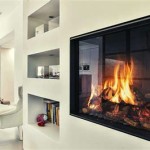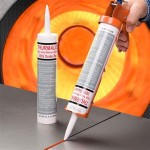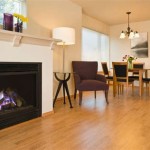The Timeless Appeal and Functional Importance of a Fireplace Mantel
The fireplace mantel, a prominent architectural feature surrounding a fireplace, serves a dual purpose: aesthetic enhancement and functional utility. It's a focal point in a room, drawing the eye and contributing significantly to the overall ambiance. Beyond its visual appeal, a mantel provides a practical surface for displaying decorative objects, supporting architectural elements, and even housing essential fireplace tools.
The history of the fireplace mantel dates back centuries, evolving from simple stone ledges intended to catch soot to elaborate, ornate structures crafted by skilled artisans. Early mantels were primarily functional, designed to protect flammable wall materials from the heat of the fire. As building techniques improved and fireplaces became more integrated into interior design, the mantel transformed into a decorative element, reflecting the architectural styles and artistic trends of the time. From the grand, imposing mantels of Victorian-era homes to the clean, minimalist designs of contemporary spaces, the fireplace mantel continues to adapt and endure as a symbol of warmth, comfort, and refined taste.
Choosing the right fireplace mantel requires careful consideration of several factors, including the existing architectural style of the home, the size and scale of the fireplace, and the desired aesthetic. Materials, such as wood, stone, brick, and metal, each offer unique visual characteristics and inherent properties that influence the overall look and feel of the fireplace. The mantel's design, whether traditional, modern, rustic, or eclectic, should complement the surrounding decor and reflect the homeowner's personal style.
Understanding the Functionality and Benefits of a Fireplace Mantel
The primary function of a fireplace mantel is to provide a visually appealing frame for the fireplace opening. It serves as a focal point, drawing attention to the hearth and contributing to the overall design of the room. However, the benefits of a mantel extend beyond mere aesthetics. A mantel provides a practical surface for displaying decorative objects, such as family photos, artwork, candles, and seasonal decorations. This allows homeowners to personalize their living spaces and create a warm, inviting atmosphere. The mantel also provides a convenient location for storing fireplace accessories, such as pokers, tongs, and bellows, keeping them readily accessible when needed.
Beyond decorative and storage purposes, a fireplace mantel can also offer structural support. In some fireplace designs, the mantel is integrated into the chimney structure, providing reinforcement and stability. A well-constructed mantel can help to distribute the weight of the chimney and prevent cracking or damage to the surrounding walls. Furthermore, a mantel can serve as a safety feature, protecting combustible materials from the direct heat of the fire. By providing a barrier between the fireplace opening and the wall, the mantel can help to reduce the risk of fire hazards.
The choice of mantel height is also a crucial consideration, impacting both the visual balance and the practical functionality of the fireplace. A properly positioned mantel should be high enough to protect decorative items from excessive heat but low enough to maintain a comfortable viewing angle of the fire. Building codes often specify minimum clearances between the fireplace opening and the mantel to ensure safety and prevent the risk of fire. Consulting with a qualified contractor or fireplace specialist is recommended to determine the optimal mantel height for a specific fireplace design.
Exploring Different Materials and Styles of Fireplace Mantels
The selection of materials for a fireplace mantel is a key factor in determining its overall appearance and durability. Wood, stone, brick, and metal are among the most common materials used in mantel construction, each offering unique characteristics and aesthetic qualities. Wooden mantels are prized for their warmth, versatility, and ease of customization. They can be carved, stained, or painted to match a wide range of architectural styles and design preferences. Stone mantels, such as granite, marble, and limestone, offer a timeless elegance and durability. They are resistant to heat and moisture, making them ideal for use in fireplaces. Brick mantels provide a rustic, traditional look, often complementing exposed brick walls or fireplaces. Metal mantels, such as iron or steel, offer a sleek, contemporary aesthetic, often found in modern homes.
The style of a fireplace mantel should complement the architectural style of the home and reflect the homeowner's personal taste. Traditional mantels often feature ornate carvings, intricate moldings, and classic details. These mantels are commonly found in Victorian, Georgian, and Colonial-style homes. Modern mantels are characterized by clean lines, minimalist designs, and a focus on functionality. They often feature simple geometric shapes and neutral colors. Rustic mantels evoke a sense of warmth and authenticity, often incorporating natural materials such as reclaimed wood or rough-cut stone. Eclectic mantels combine elements from different styles, creating a unique and personalized look.
In addition to the material and style, the finish of a fireplace mantel also plays a significant role in its overall appearance. Painted mantels offer a versatile option, allowing homeowners to easily change the color and finish to match their evolving decor. Stained mantels showcase the natural beauty of the wood grain, highlighting the unique patterns and textures of the material. Distressed finishes create a vintage or antique look, adding character and charm to the mantel. The choice of finish should be carefully considered to complement the surrounding design elements and create the desired aesthetic.
Installation and Maintenance Considerations for Fireplace Mantels
Proper installation is essential for ensuring the safety, stability, and longevity of a fireplace mantel. The installation process will vary depending on the type of mantel, the construction of the fireplace, and the building codes in the area. For heavier mantels, such as those made of stone or brick, professional installation is highly recommended. A qualified contractor will have the necessary expertise and equipment to ensure that the mantel is properly secured to the wall and chimney structure. For lighter mantels, such as those made of wood, a homeowner with basic carpentry skills may be able to handle the installation. However, it is important to carefully follow the manufacturer's instructions and take all necessary safety precautions.
Before installing a fireplace mantel, it is important to inspect the fireplace and chimney for any signs of damage or deterioration. Cracks, loose bricks, or deteriorated mortar should be repaired before installing the mantel. It is also important to ensure that the fireplace is properly ventilated and that the chimney is free of obstructions. Installing a mantel over a damaged or improperly functioning fireplace can create a safety hazard and compromise the structural integrity of the mantel.
Regular maintenance is essential for preserving the beauty and extending the lifespan of a fireplace mantel. Wooden mantels should be cleaned regularly with a soft cloth and mild detergent to remove dust and grime. Avoid using harsh chemicals or abrasive cleaners, as these can damage the finish. Stone and brick mantels can be cleaned with a damp cloth and a mild soap solution. Metal mantels should be cleaned with a metal cleaner to prevent rust and corrosion. Periodic inspections should be conducted to check for any signs of damage or deterioration. Cracks, chips, or loose joints should be repaired promptly to prevent further damage. By following these simple maintenance tips, homeowners can ensure that their fireplace mantels remain a beautiful and functional part of their homes for many years to come.

Fireplace Mantels Mantel Shelves Custom Surrounds And More Direct

Country Living 72 In W X 5 H 9 D White Wash Pine Hollow Farmhouse Fireplace Mantel The Mantels Department At Com

Pearl Mantels 48 In X 42 Interior Opening Crisp White Full Surround Fireplace Mantel Rps48525d The Home Depot

Francis Fireplace Mantel Pottery Barn

Barnwood Fireplace Mantel The Collection
:max_bytes(150000):strip_icc()/sandandsisal-bdc76ad938a44d28ae9e23ef6c9fa331.jpg?strip=all)
17 Diy Fireplace Mantel Plans

White 52 Inch X 39 Wood Fireplace Mantel Surround Kit With Shelf And Trim Essex From Mantels Direct Poplar Wooden Chimney Com

65 Jim White Fireplace Mantel

How To Select And Size Your Fireplace Mantel Water S Edge Woods Custom Wood

Modern Rustic Mantel 7 Deep By 6 Tall Sawtooth Ridge Woodworks
Related Posts








